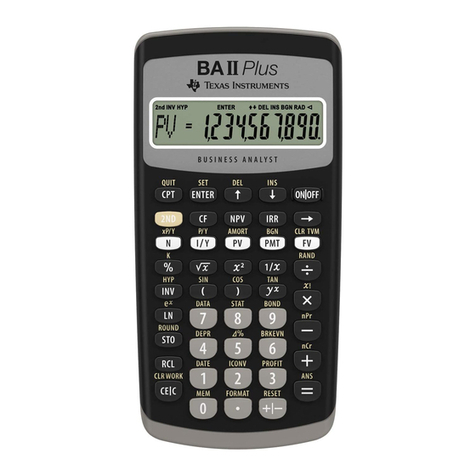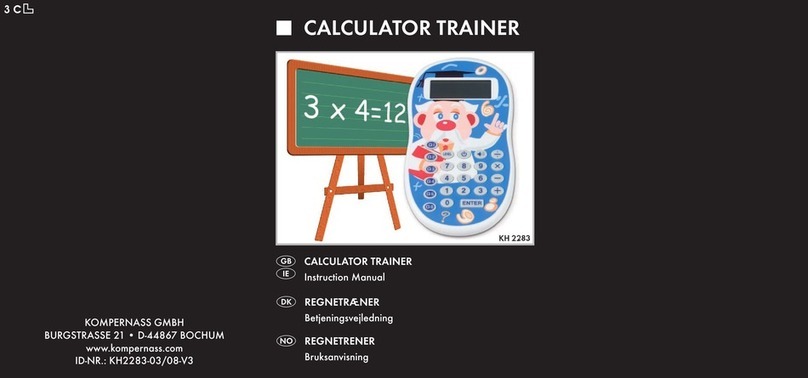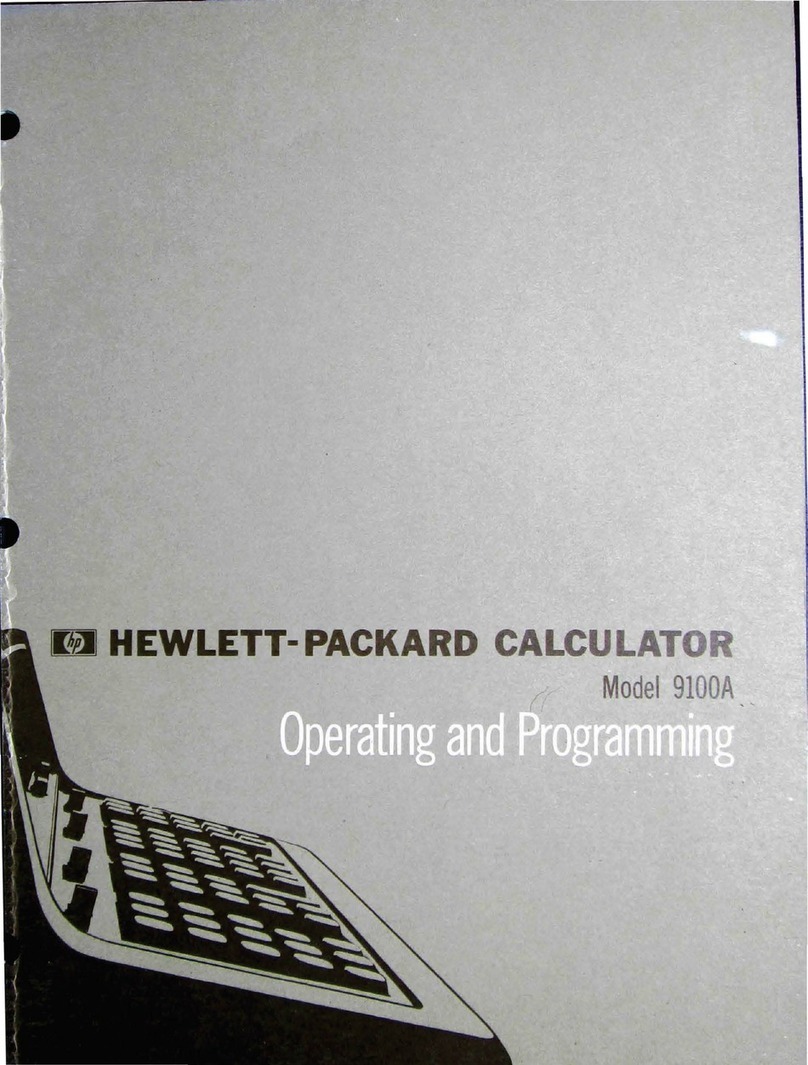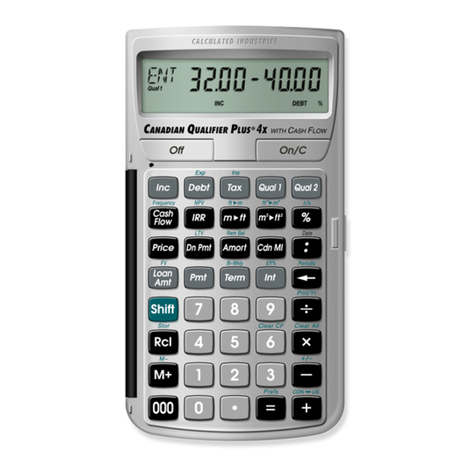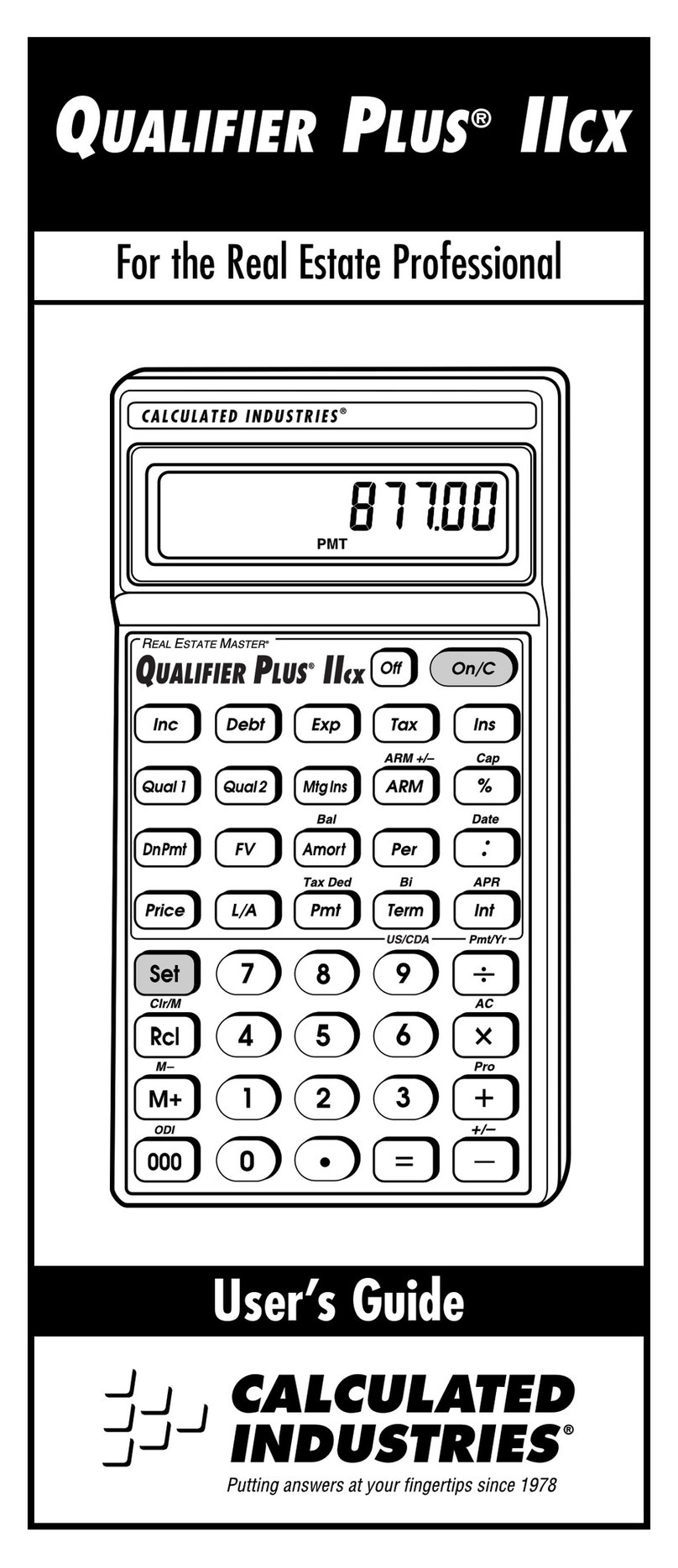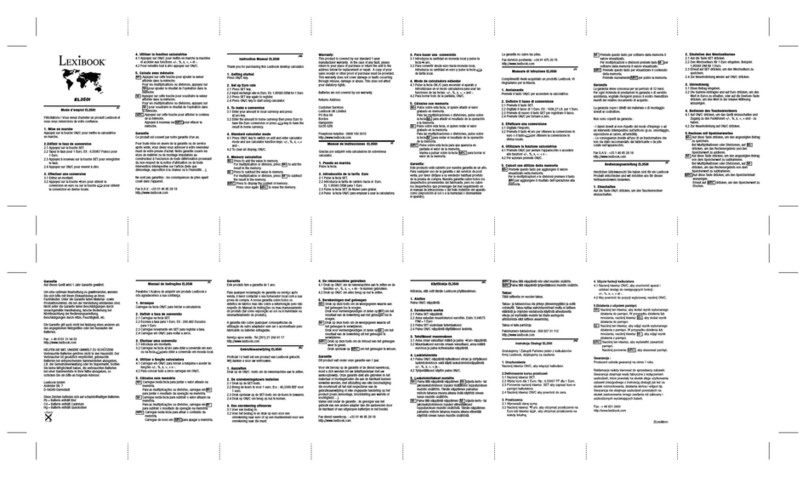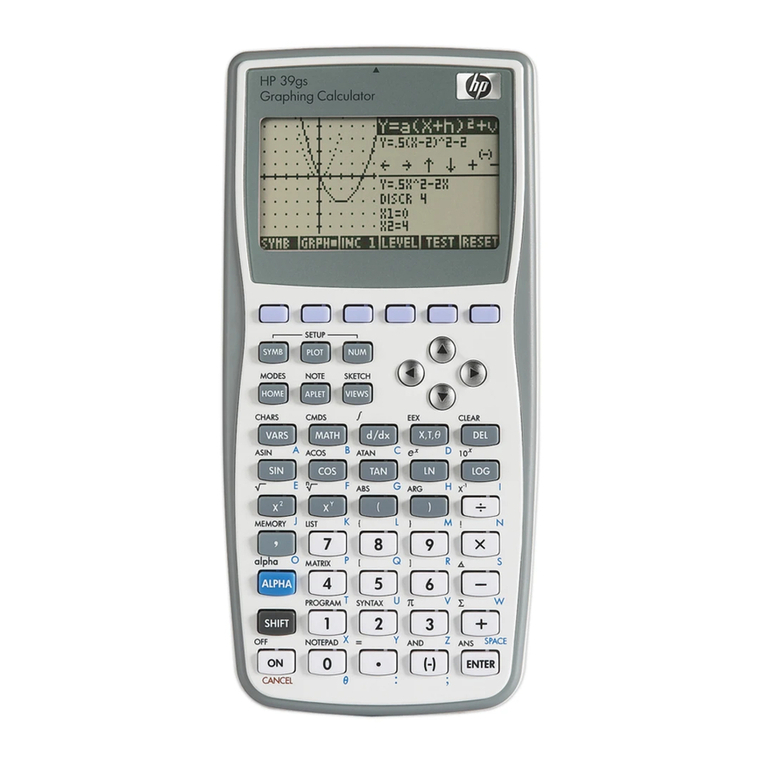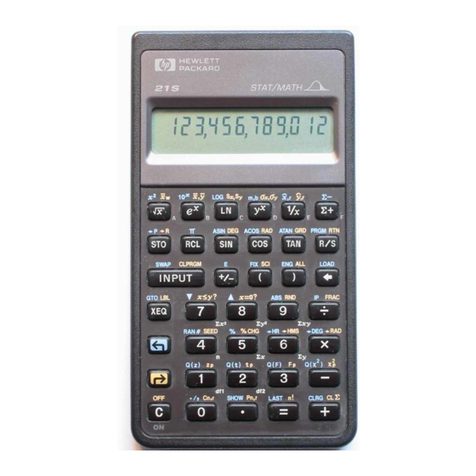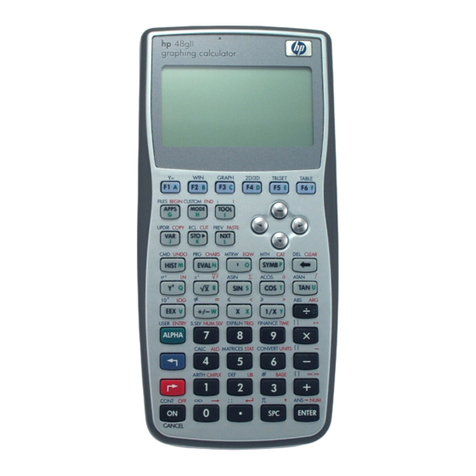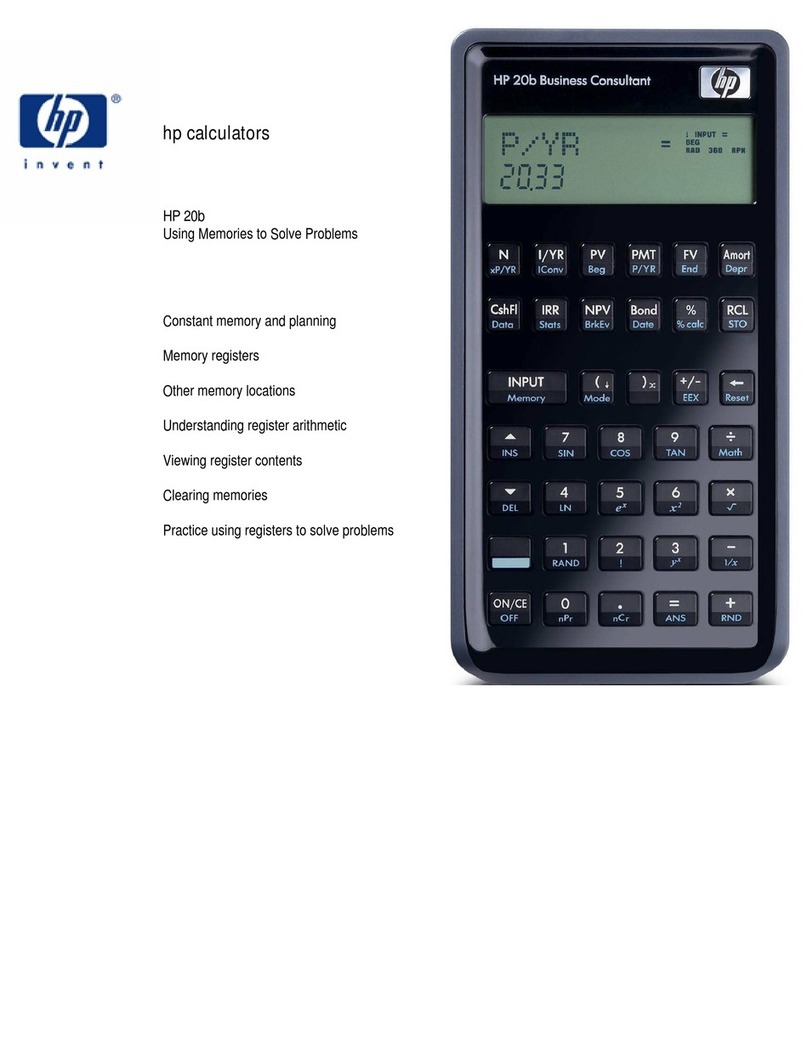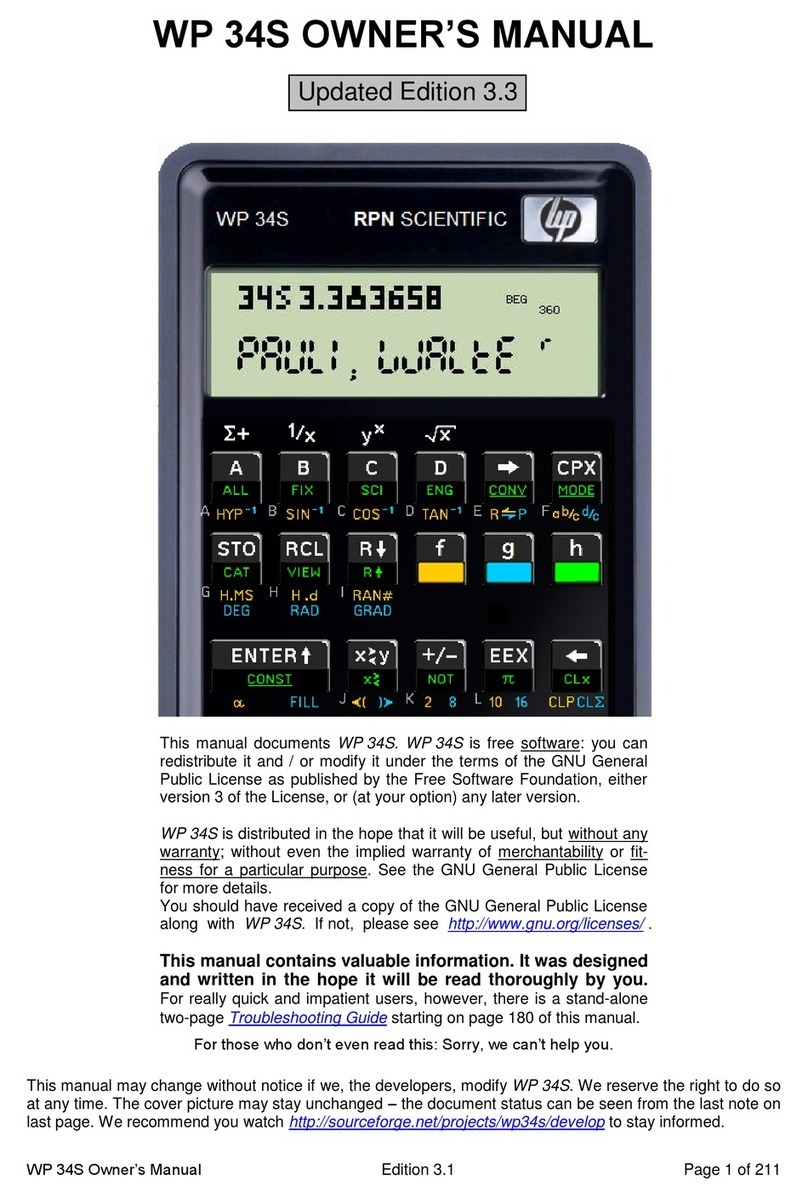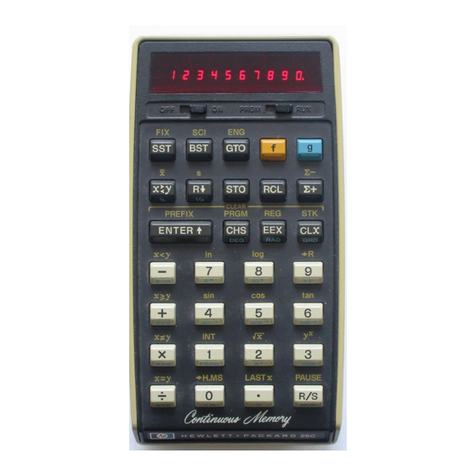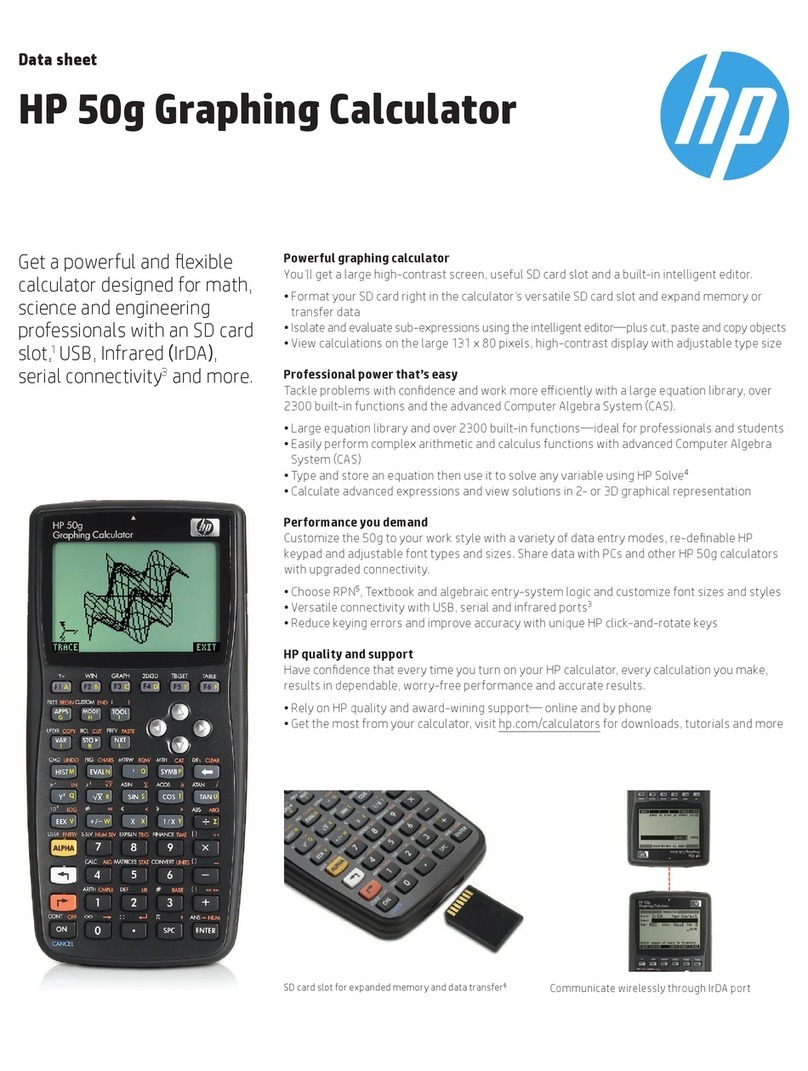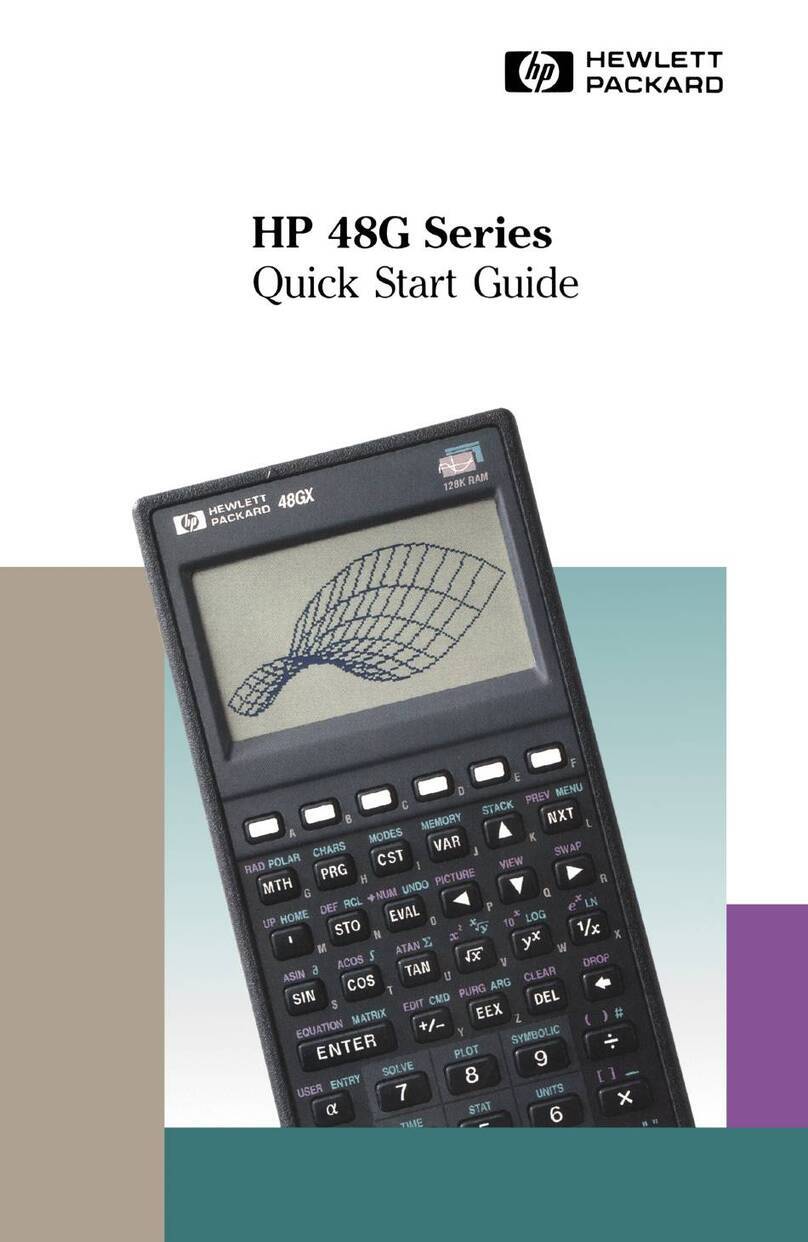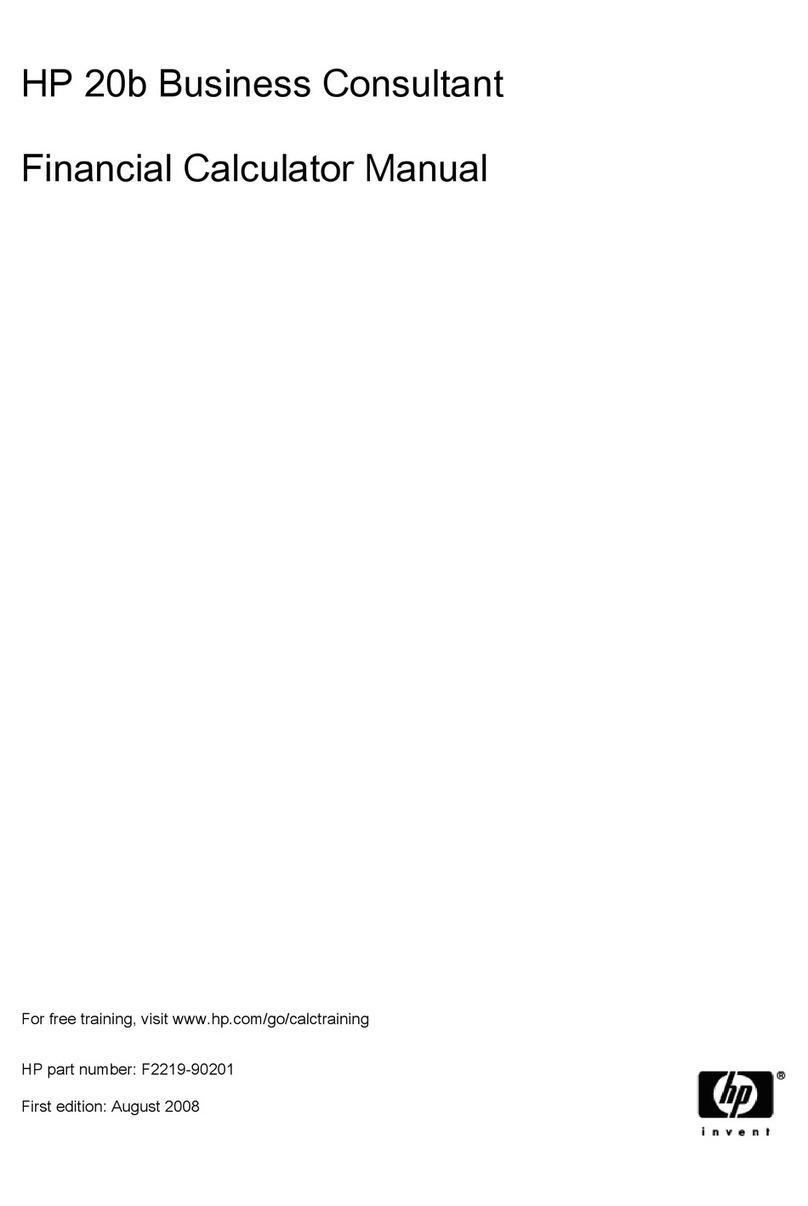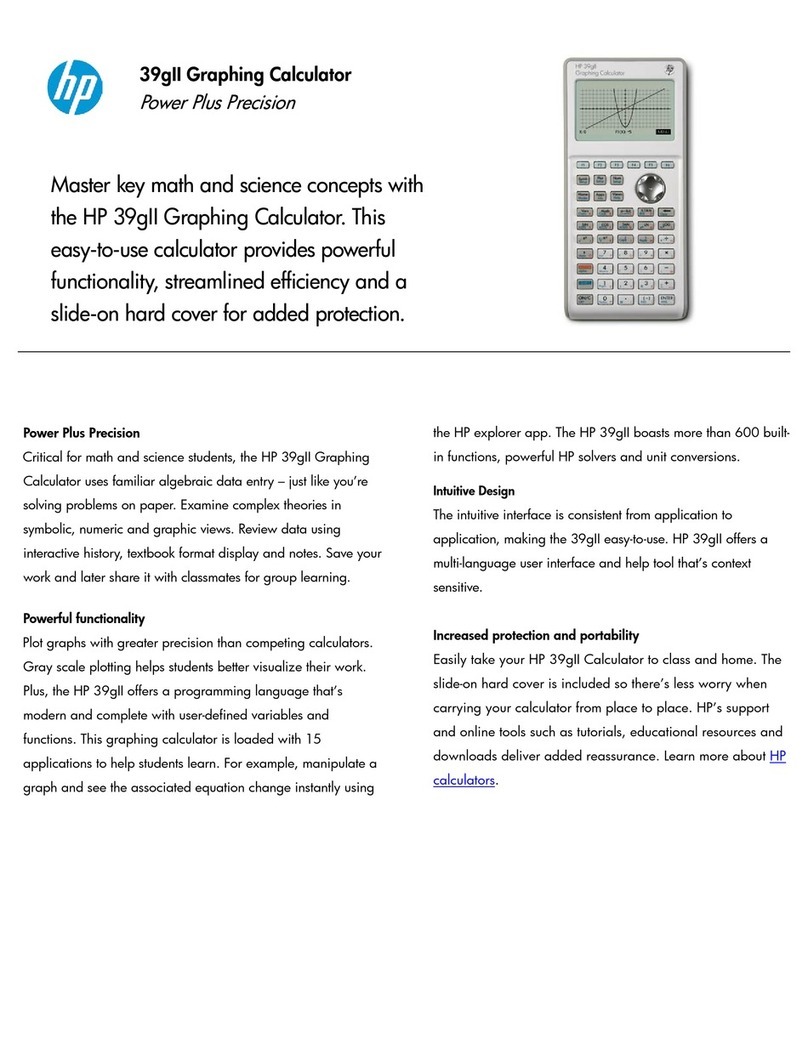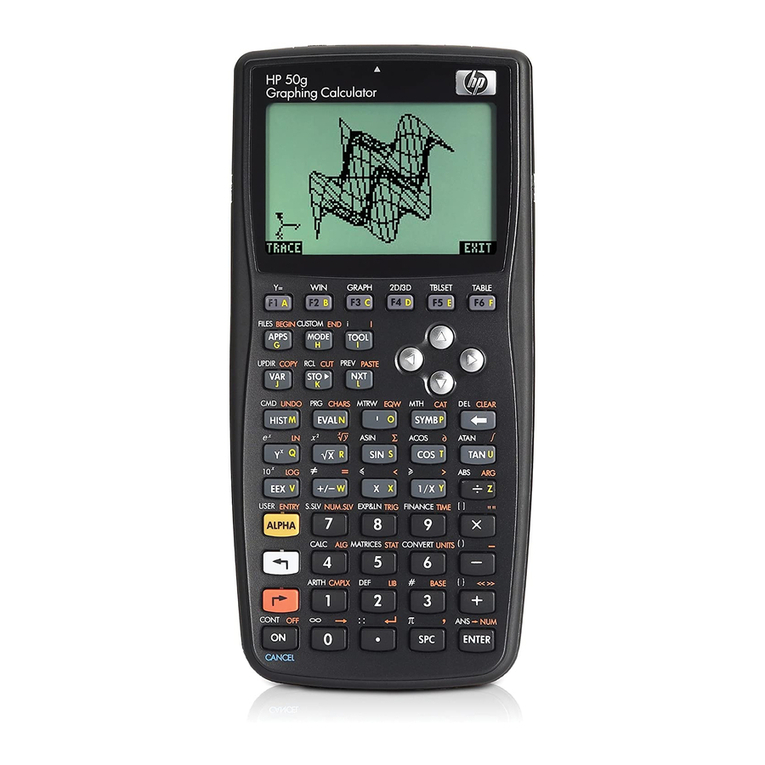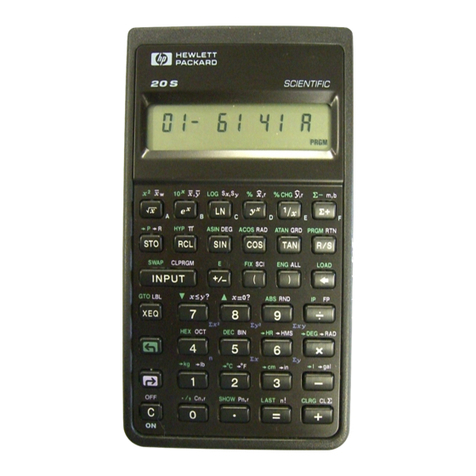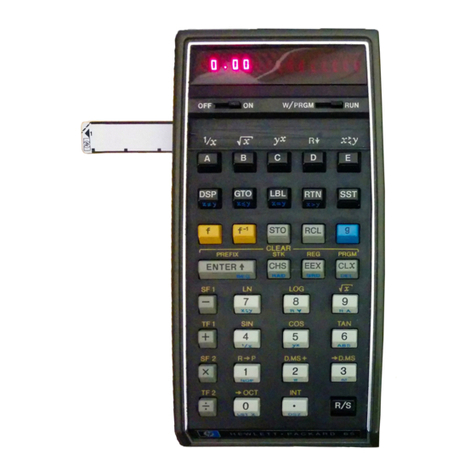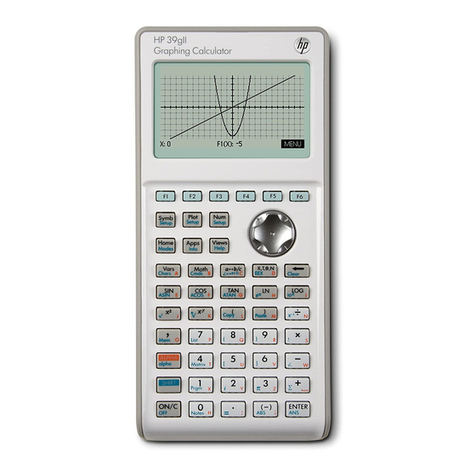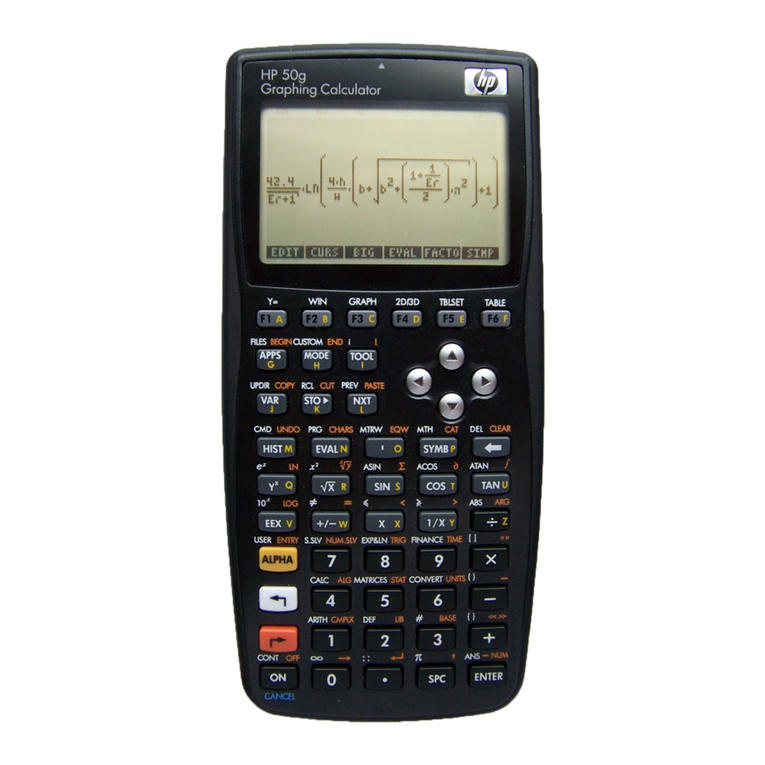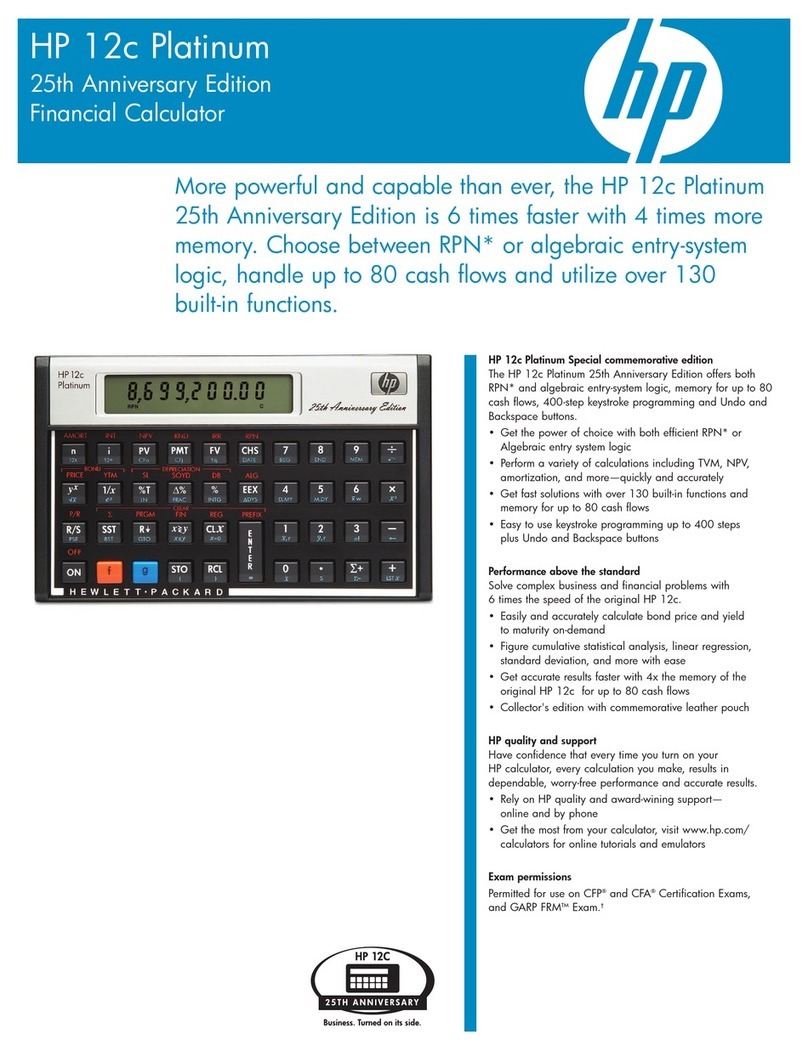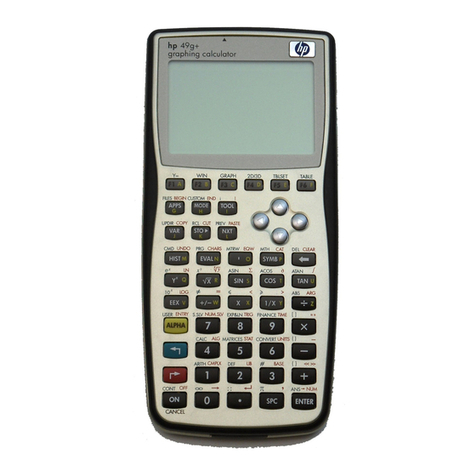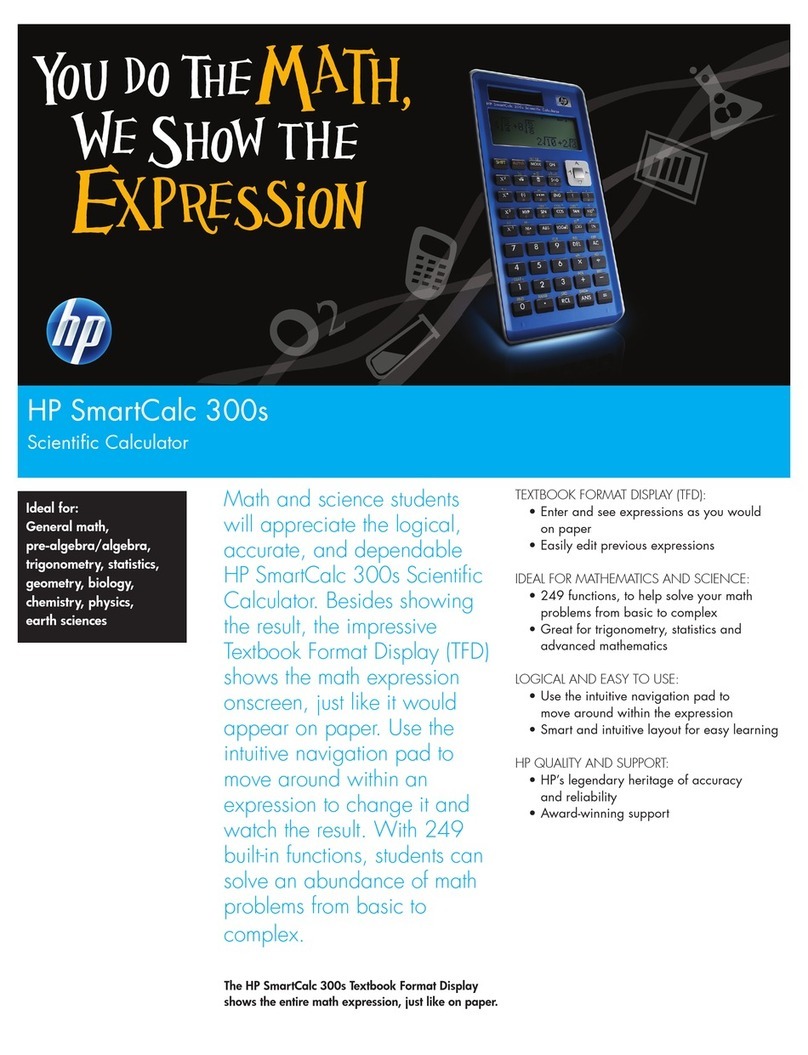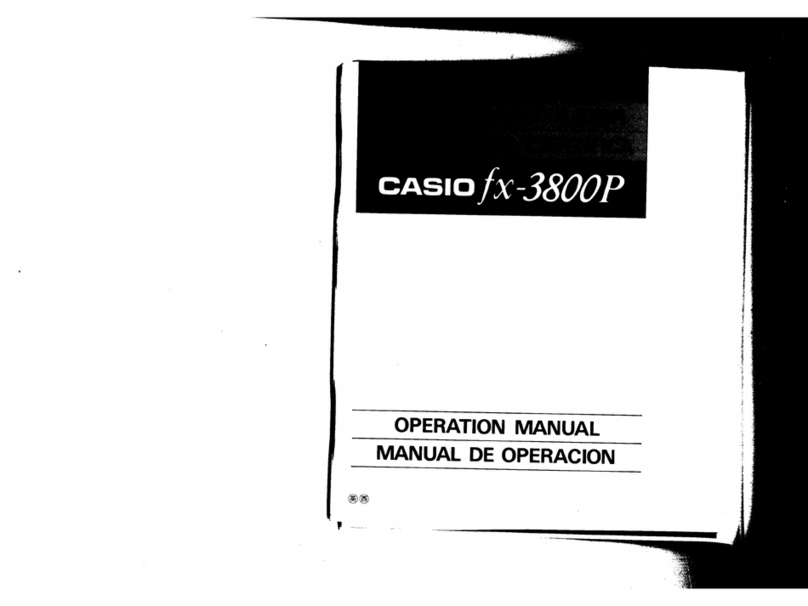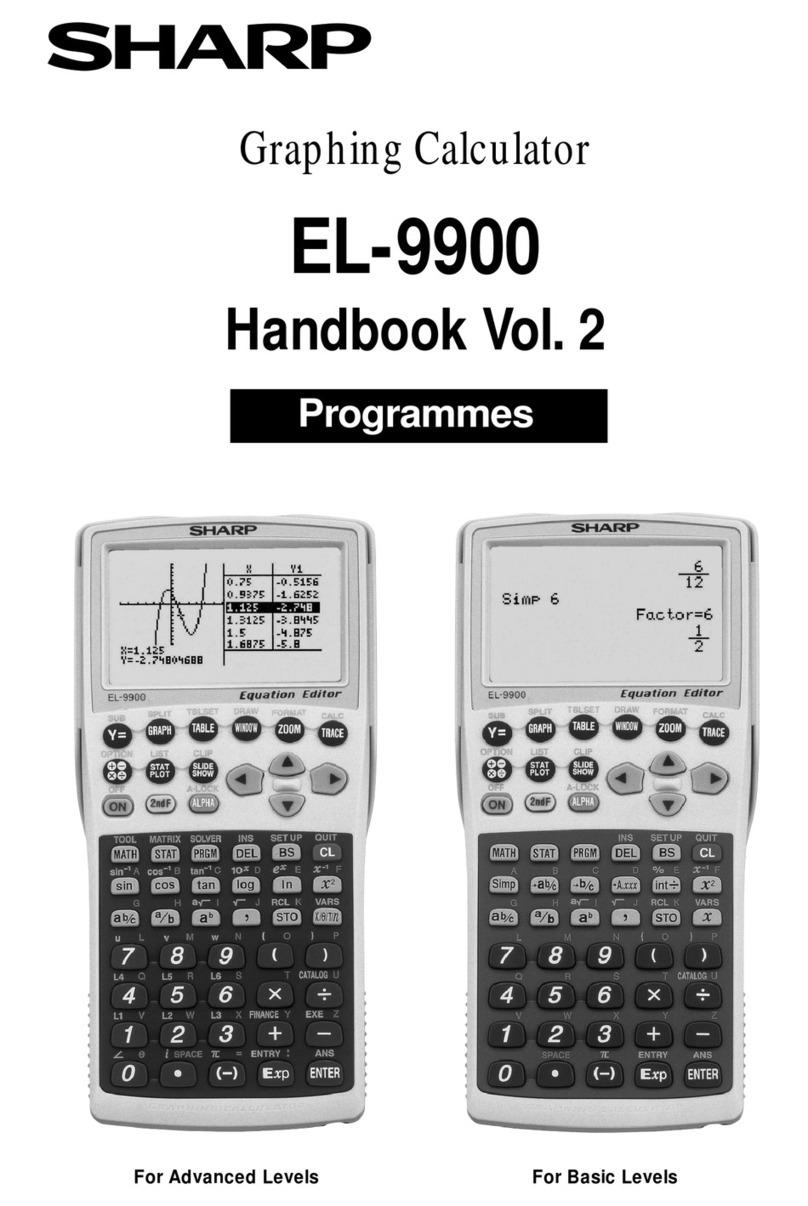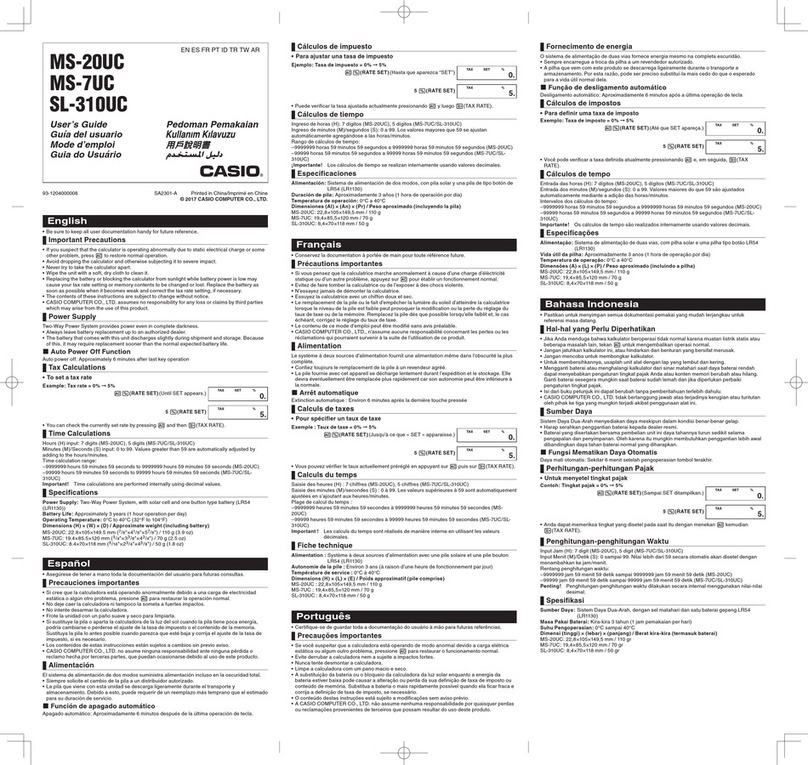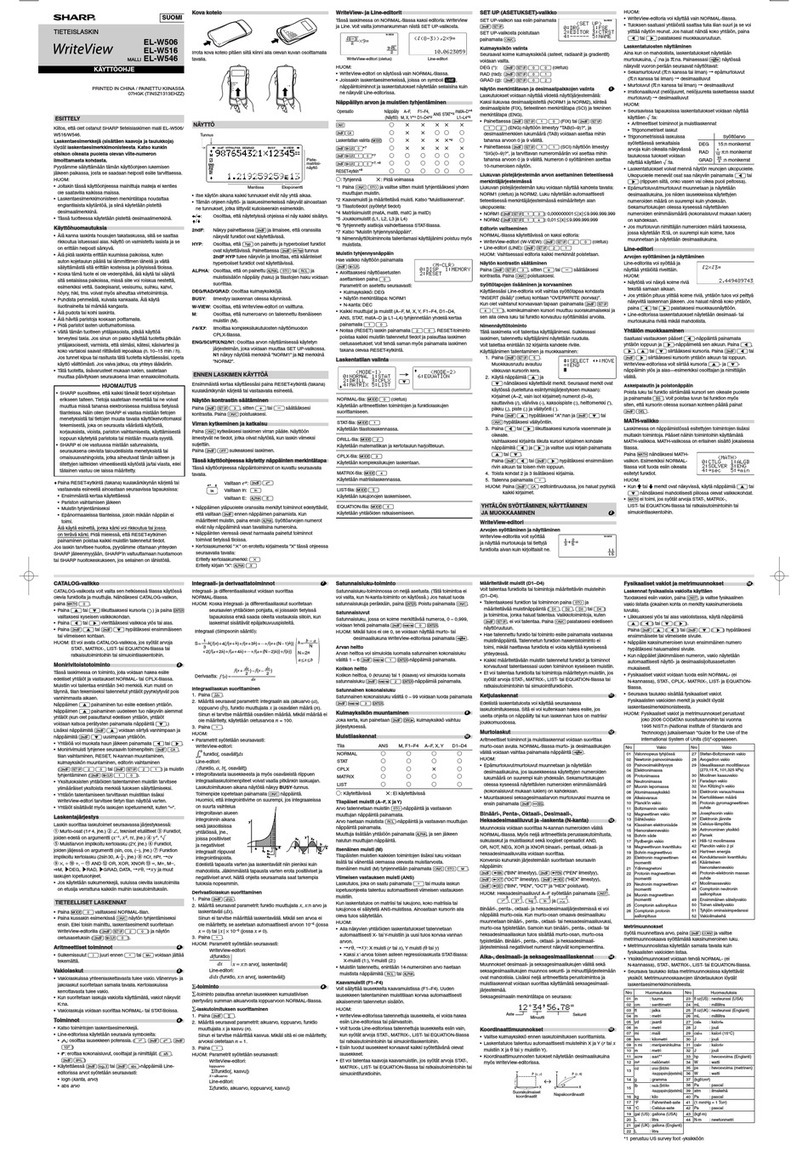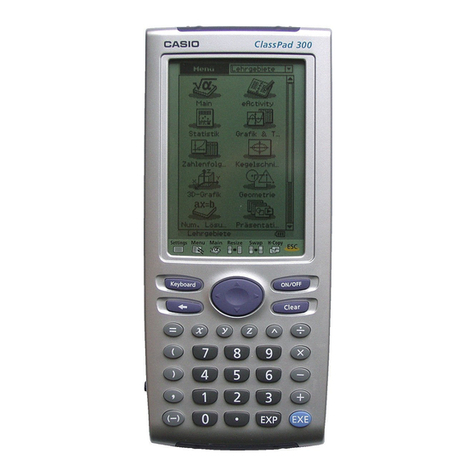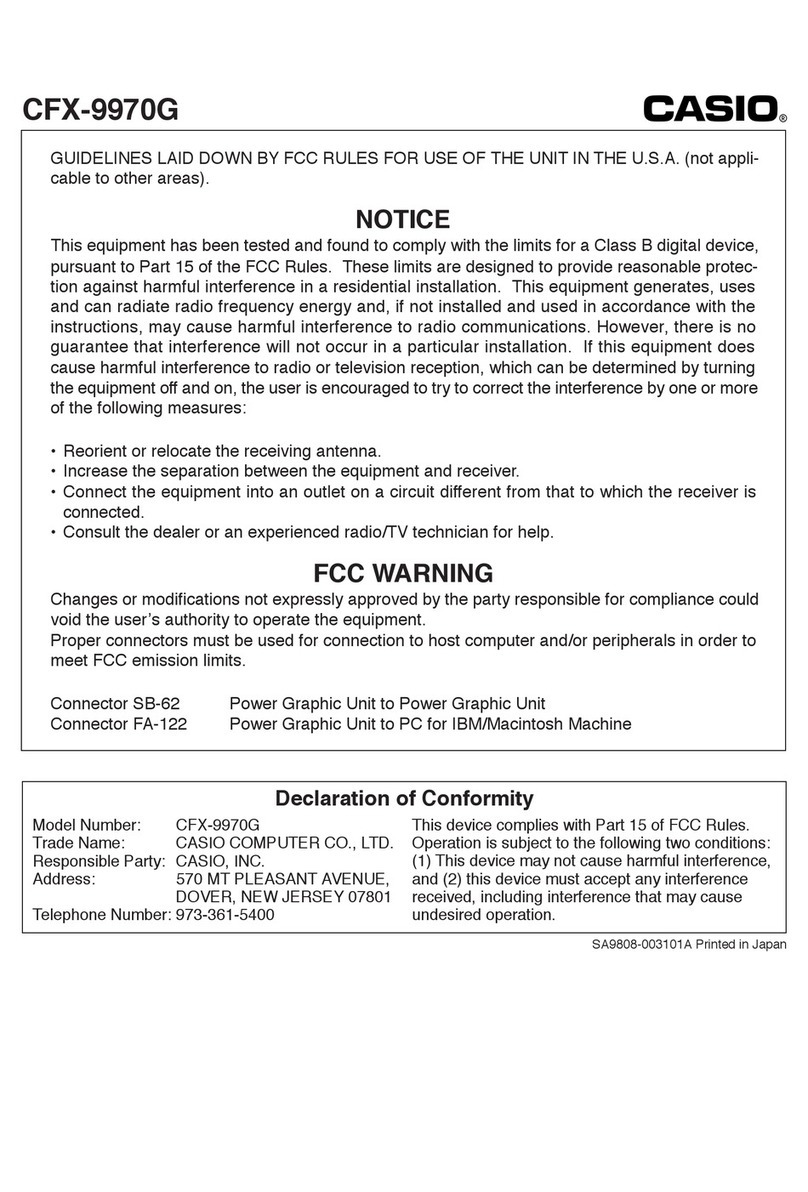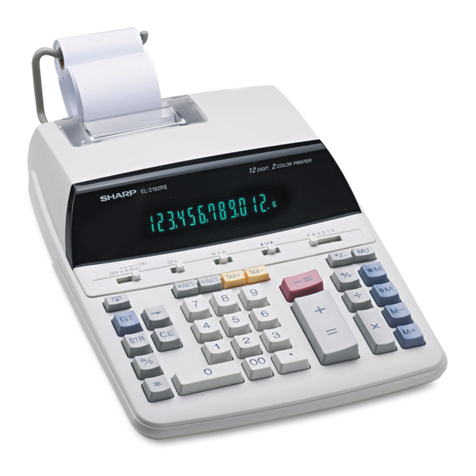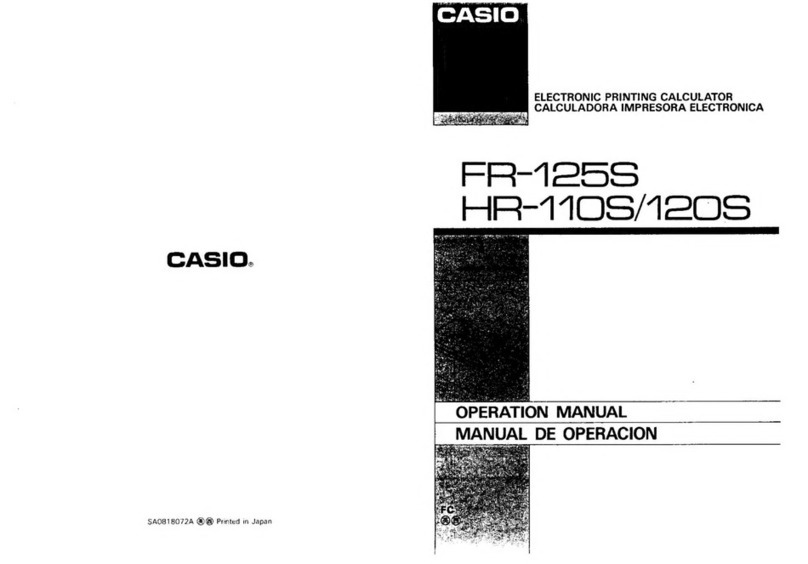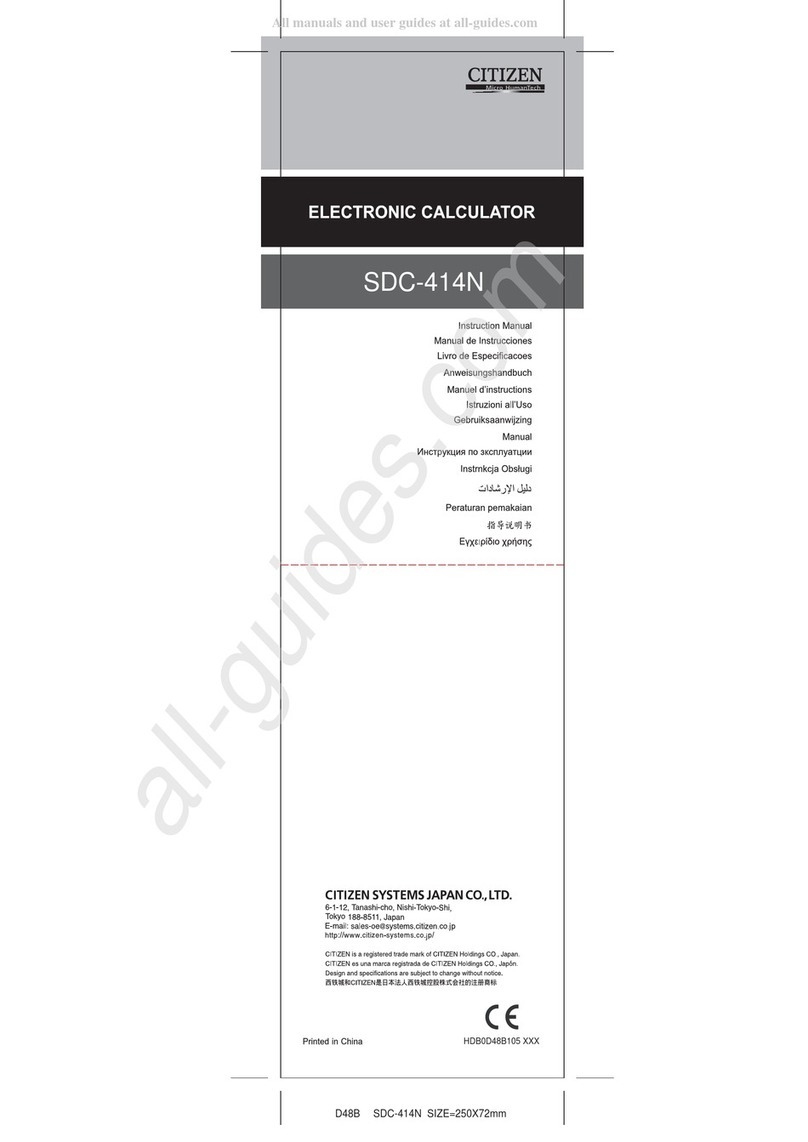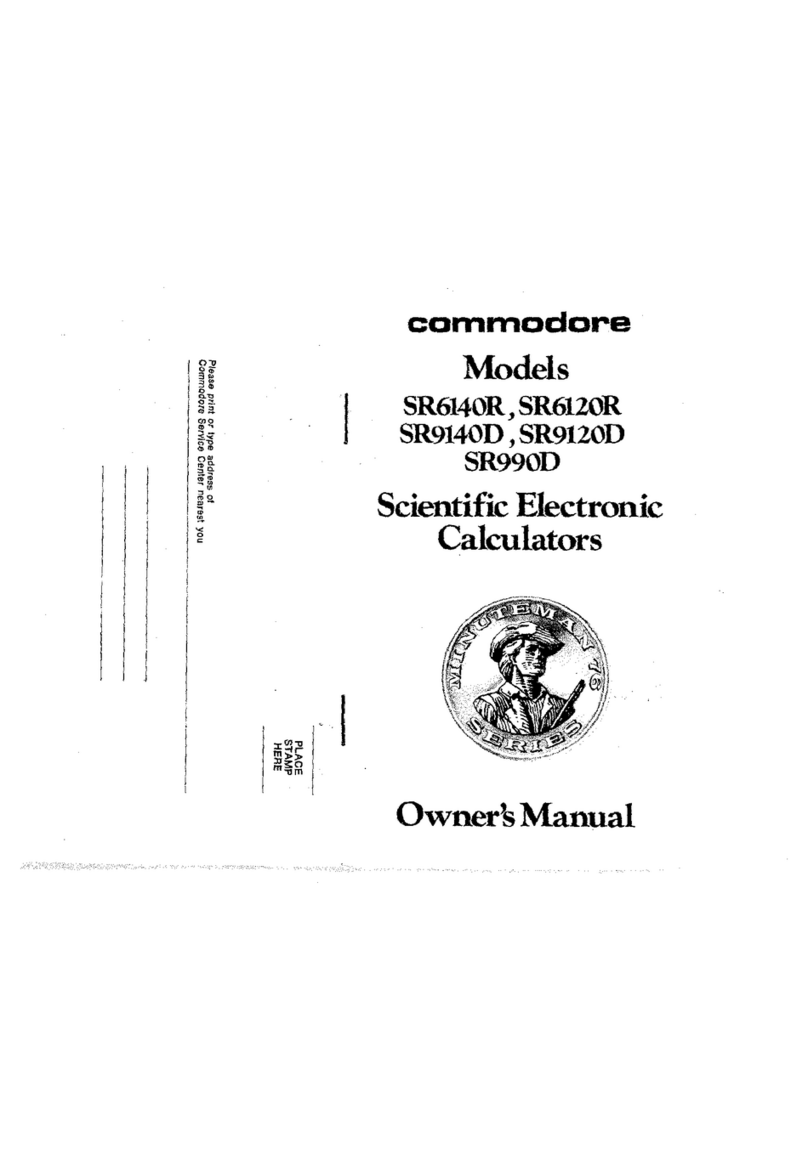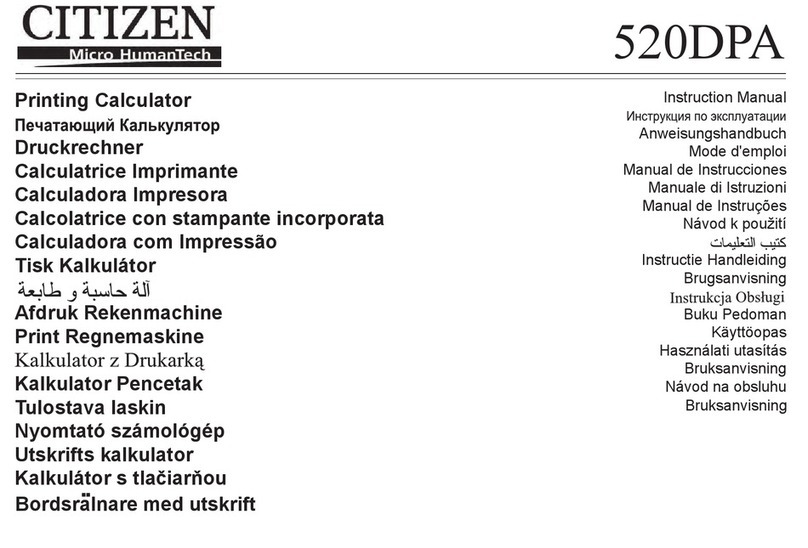
Preface
You have in your hands a compact symbolic and numerical computer that will
facilitate calculation and mathematical analysis of problems in a variety of
disciplines, from elementary mathematics to advanced engineering and
science subjects. Although referred to as a calculator, because of its
compact format resembling typical hand-held calculating devices, the hp
49g+ should be thought of as a graphics/programmable hand-held computer.
The hp 49g+ can be operated in two different calculating modes, the Reverse
Polish Notation (RPN) mode and the Algebraic (ALG) mode (see page 1-11 in
user’s guide for additional details). The RPN mode was incorporated into
calculators to make calculations more efficient. In this mode, the operands in
an operation (e.g., ‘2’ and ‘3’ in the operation ‘2+3’) are entered into the
calculator screen, referred to as the stack, and then the operator (e.g., ‘+’ in
the operation ‘2+3’) is entered to complete the operation. The ALG mode, on
the other hand, mimics the way you type arithmetic expressions in paper.
Thus, the operation ‘2+3’, in ALG mode, will be entered in the calculator by
pressing the keys ‘2’, ‘+’, and ‘3’, in that order. To complete the operation
we use the ENTER key. Examples of applications of the different functions
and operations in this calculator are illustrated in this user’s guide in both
modes.
This guide contains examples that illustrate the use of the basic calculator
functions and operations. The chapters in this user’s guide are organized by
subject in order of difficulty. Starting with the setting of calculator modes and
display options, and continuing with real and complex number calculations,
operations with lists, vectors, and matrices, detailed examples of graph
applications, use of strings, basic programming, graphics programming,
string manipulation, advanced calculus and multivariate calculus applications,
advanced differential equations applications (including Laplace transform,
and Fourier series and transforms), and probability and statistic applications.
For symbolic operations the calculator includes a powerful Computer
Algebraic System (CAS) that lets you select different modes of operation, e.g.,
complex numbers vs. real numbers, or exact (symbolic) vs. approximate
